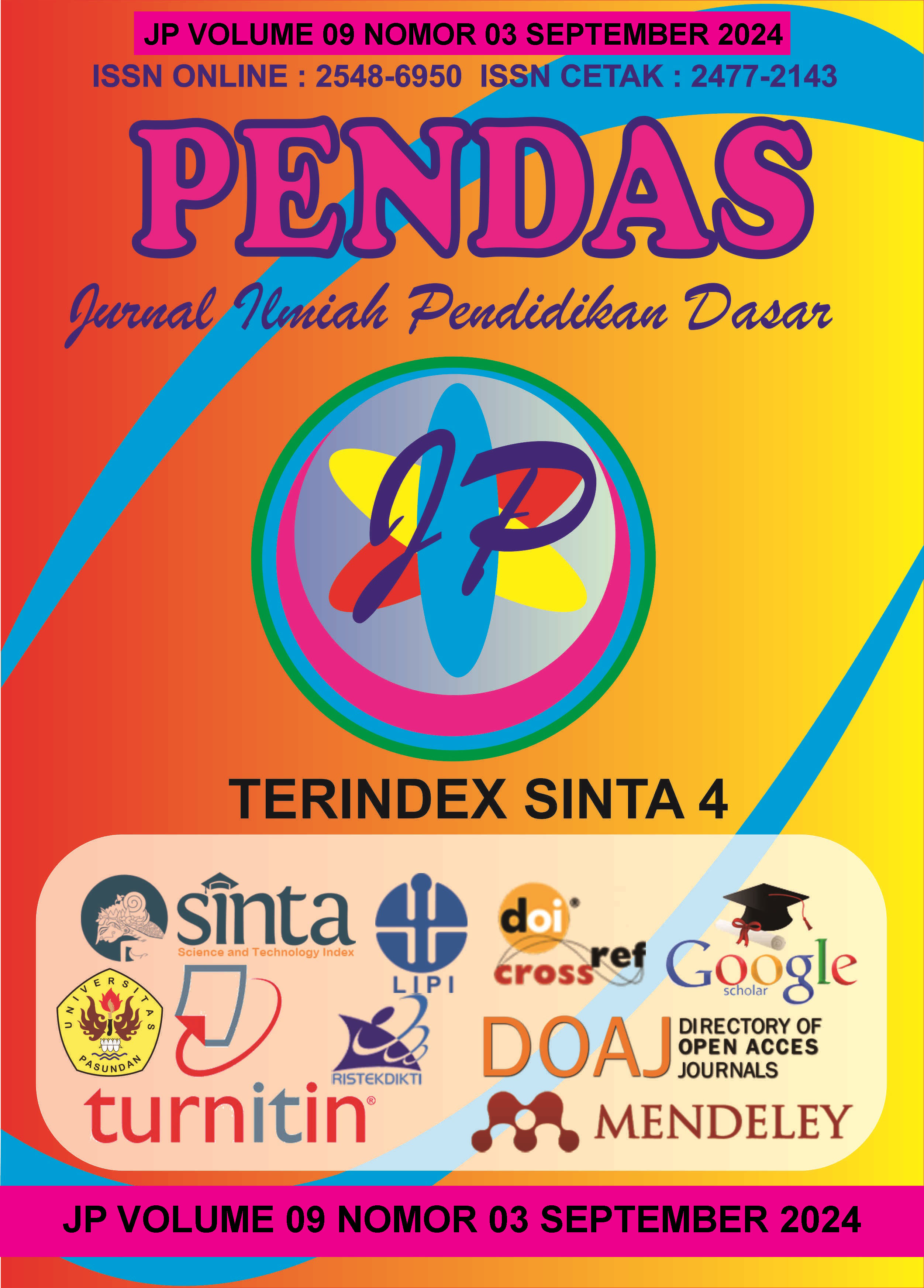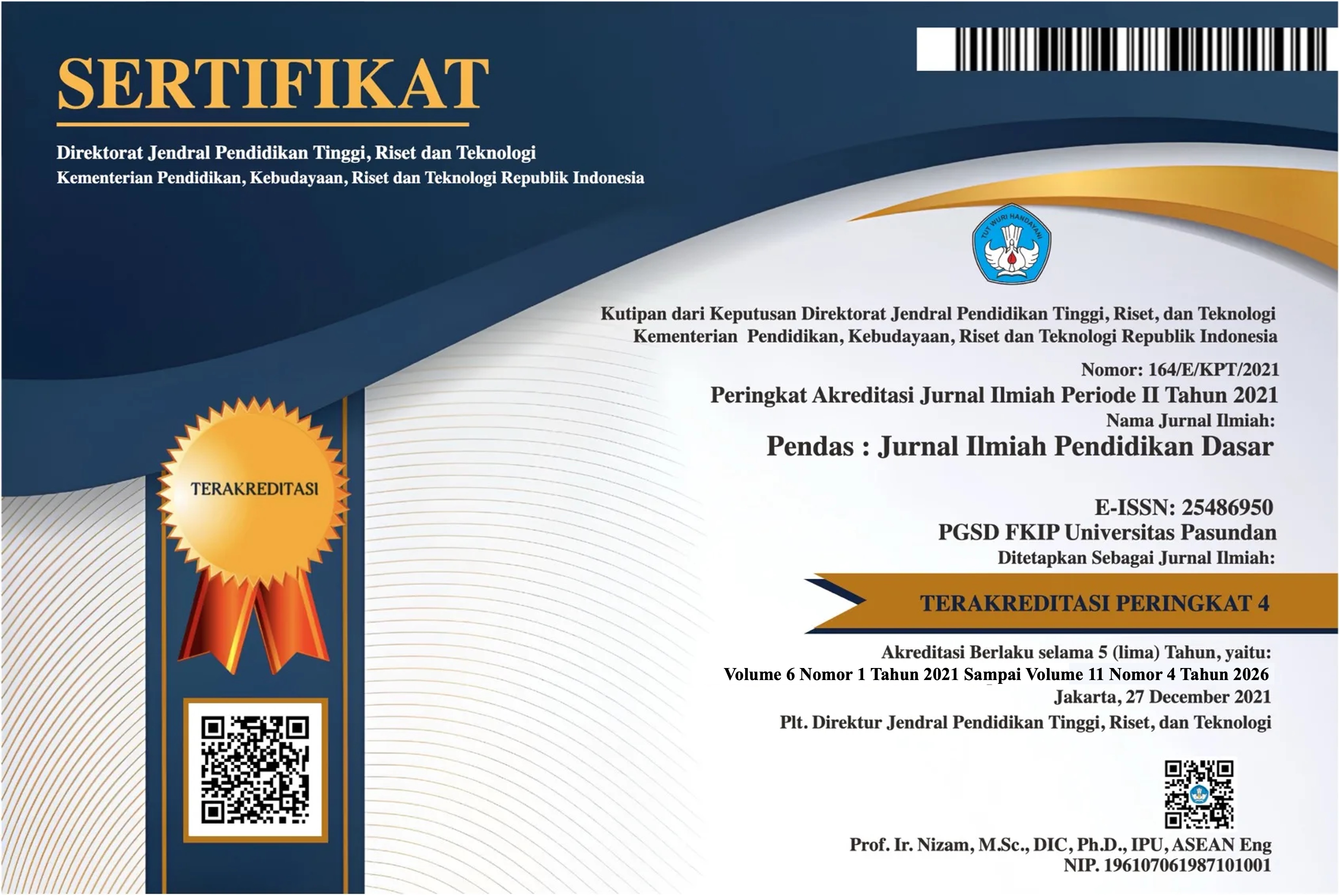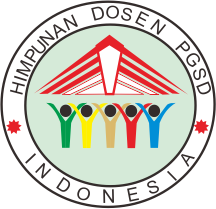PENGGUNAAN DIORAMA SEBAGAI SARANA INTERAKTIF DALAM PEMBELAJARAN IPAS UNTUK KELAS 5 SEKOLAH DASAR
Keywords:
Dioramas, Interactive Learning, Science and Social StudiesAbstract
This study aims to explore the use of dioramas as interactive tools in teaching Integrated Science and Social Studies (IPAS) for Grade 5. The research seeks to understand how dioramas are implemented in the learning context and their impact on students' learning experiences. Data were collected through interviews, classroom observations, and analysis of the use of dioramas with 29 students at SDN Panaragan 1. The findings indicate that dioramas enhance student engagement and facilitate a deeper understanding of IPAS concepts through a more visual and interactive approach. Dioramas help students develop critical and creative thinking skills and deepen their comprehension of the subject matter. The results provide insights into how dioramas can be more effectively integrated into IPAS.
Downloads
References
Buku:
Harris, L., & Wisker, G. (2020). Visual tools for learning: Enhancing student engagement with interactive resources. Academic Press.
Jones, D., & Smith, R. (2023). Understanding abstract concepts: Visual aids in education. Oxford University Press.
Kim, M., Lee, S., & Choi, Y. (2021). The impact of visual aids on learning: A comprehensive review. Springer.
Kumar, S., Patel, S., & Bhatia, R. (2019). Innovative teaching strategies in primary education. Routledge.
Prasetya, R., & Wulandari, I. (2022). Active learning strategies in primary education. Routledge.
Sari, N., & Hermawan, M. (2022). Motivating students through interactive methods. Cambridge University Press.
Williams, A., & Thompson, J. (2021). Time management in teaching: Balancing preparation and instruction. Palgrave Macmillan.
Yin, R. K. (2018). Case study research and applications: Design and methods (6th ed.). Sage Publications.
Jurnal:
Anderson, K., Brown, P., & Smith, J. (2024). The role of visual aids in connecting theory with practice. Journal of Educational Research, 45(3), 210-225. https://doi.org/10.1016/j.jedu.2024.03.005
Braun, V., & Clarke, V. (2006). Using thematic analysis in psychology. Qualitative Research in Psychology, 3(2), 77-101. https://doi.org/10.1191/1478088706qp063oa
Brown, L., Davis, M., & Johnson, A. (2022). Visual representations in science education: Enhancing student understanding. Science Education Review, 39(2), 125-140. https://doi.org/10.1080/00380169.2022.1234567
Chen, Y., Lee, T., & Wang, Z. (2022). Enhancing student participation through interactive learning tools. Journal of Active Learning, 32(4), 345-358. https://doi.org/10.1080/14673940.2022.1234568
Hwang, G., & Wang, Y. (2020). Interactive visual aids and student engagement. Educational Technology Research and Development, 68(1), 55-70. https://doi.org/10.1007/s11423-019-09762-6
Jones, D., & Smith, R. (2023). Enhancing understanding through visual aids: A review of recent studies. Journal of Visual Learning, 30(1), 33-47. https://doi.org/10.1016/j.jvl.2023.01.004
Kim, M., Lee, S., & Choi, Y. (2021). The effectiveness of dioramas in teaching science concepts. Educational Research Quarterl, 44(2), 97-110. https://doi.org/10.1080/10509039.2021.2345678
Ramdani, A., & Widodo, M. (2020). Challenges in integrating visual aids in curriculum. Journal of Curriculum and Instruction, 36(2), 145-160. https://doi.org/10.1080/13545160.2020.1789000
Yusoff, N., Ismail, Z., & Ahmad, M. (2022). Preparing and implementing interactive visual aids: Insights and challenges. International Journal of Teaching and Learning, 29(4), 85-95. https://doi.org/10.1016/j.ijtl.2022.06.002
Downloads
Published
Issue
Section
License
Copyright (c) 2024 Pendas : Jurnal Ilmiah Pendidikan Dasar

This work is licensed under a Creative Commons Attribution 4.0 International License.



















